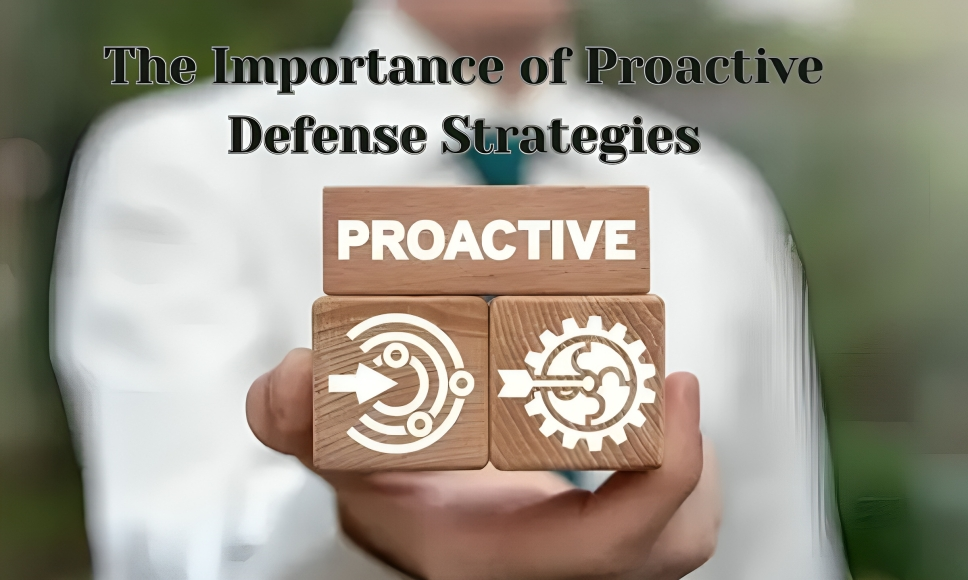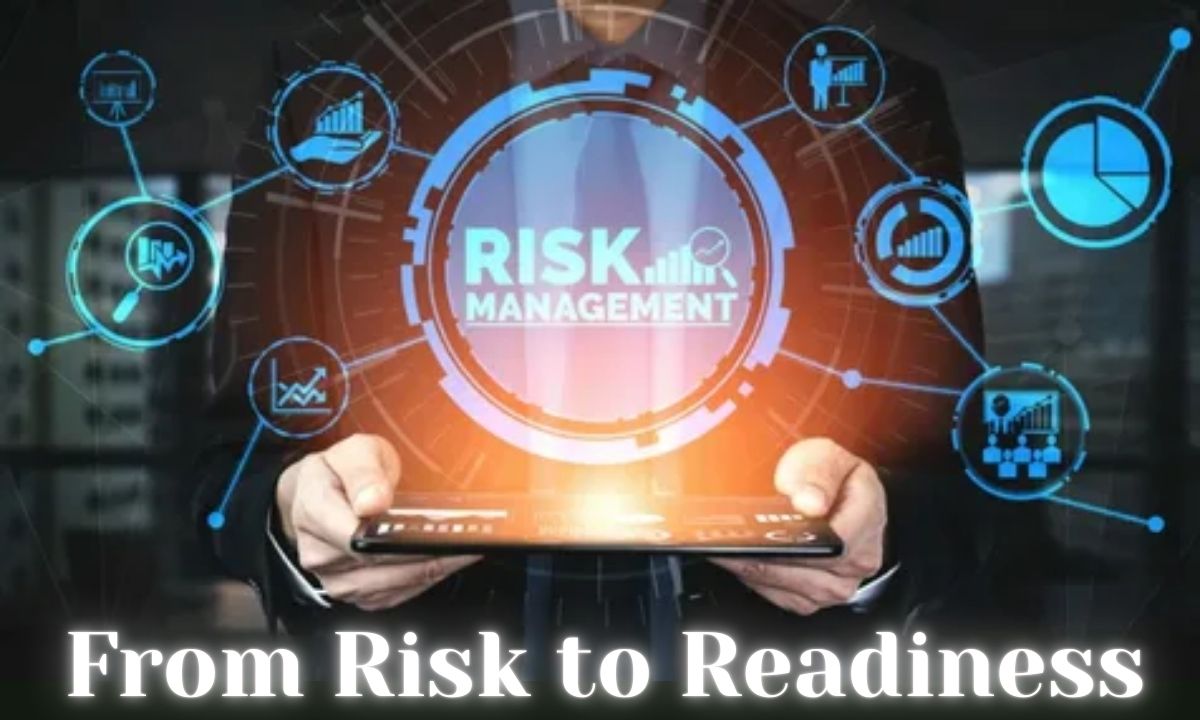Small and medium-sized businesses are increasingly becoming targets for cyber criminals. The digital landscape is filled with threats that can devastate unprepared companies. Many SMB owners falsely believe they’re too small to be targeted.
This misconception leaves them vulnerable to attacks. Recent data shows that SMBs face nearly as many cyberattacks as large corporations. The consequences of a breach can be catastrophic for smaller businesses. Limited resources often prevent SMBs from implementing robust security measures.
A proper cybersecurity assessment is the first step toward protection. This evaluation helps identify vulnerabilities before they can be exploited. Every business, regardless of size, stores valuable data that hackers want.
Key Steps in Conducting a Cybersecurity Assessment
| Assessment Step | Key Activities | Benefits | Implementation Timeframe |
| Asset Identification and Inventory | • Create comprehensive IT asset list<br>• Include hardware, software, data repositories<br>• Document cloud resources and employee devices<br>• Categorize by business importance | • Focuses security efforts on critical assets<br>• Prevents overlooking vulnerable systems<br>• Creates foundation for entire security program | Initial: 2-4 weeks<br>Updates: Monthly |
| Risk Analysis and Prioritization | • Evaluate threats to each asset<br>• Consider external and internal risks<br>• Assess likelihood and potential impact<br>• Create prioritized vulnerability list | • Ensures efficient use of security resources<br>• Focuses on high-risk, high-impact issues first<br>• Helps determine appropriate security levels | Initial: 2-3 weeks<br>Updates: Quarterly |
| Vulnerability Scanning and Testing | • Use automated tools for known flaws<br>• Conduct regular system scans<br>• Implement penetration testing<br>• Follow up with remediation efforts | • Reveals weaknesses before attackers find them<br>• Shows how vulnerabilities could be exploited<br>• Uncovers blind spots internal teams miss | Scans: Monthly<br>Pen Tests: Annually |
| Security Controls Evaluation | • Review firewalls, antivirus, access controls<br>• Verify encryption of sensitive data<br>• Check patch management processes<br>• Test backup and recovery procedures | • Identifies gaps in current protections<br>• Ensures existing measures work as intended<br>• Validates security investments | Initial: 3-4 weeks<br>Updates: Semi-annually |
| Compliance Assessment | • Identify applicable regulations<br>• Evaluate practices against compliance standards<br>• Document regulatory gaps<br>• Create compliance remediation plan | • Reduces legal and regulatory risks<br>• Enhances overall security posture<br>• Prevents potential penalties | Initial: 2-3 weeks<br>Updates: Annually |
| Documentation and Reporting | • Create actionable assessment reports<br>• Highlight critical vulnerabilities<br>• Include specific recommendations<br>• Share with appropriate stakeholders | • Ensures issues don’t fall through cracks<br>• Provides roadmap for improvements<br>• Helps communicate security needs to leadership | Reports: After each assessment<br>Reviews: Quarterly |
Asset Identification and Inventory
The first crucial step is knowing what you need to protect. Create a comprehensive list of all IT assets in your organization. This includes hardware, software, data repositories, and network equipment. Don’t forget about cloud-based resources and employee devices.
Categorize assets based on their importance to business operations. Identify which systems contain sensitive data that would cause the most damage if compromised.
Document all connections between systems to understand potential attack paths. Regular updates to this inventory are essential as your business grows. This foundation helps you focus security efforts where they matter most.
READ THIS BLOG : How to Get on First Page of Google Search David Aziz?
Risk Analysis and Prioritization
Once assets are identified, evaluate potential threats to each one. Consider both external threats like hackers and internal risks from employees. Assess the likelihood of different attack scenarios and their potential impact.
Use this analysis to create a prioritized list of security concerns. Focus on high-risk, high-impact vulnerabilities first. This approach ensures efficient use of limited security resources. Remember that not all assets require the same level of protection. Risk analysis helps determine appropriate security measures for each asset.
Vulnerability Scanning and Testing
Regular vulnerability scanning reveals weaknesses in your systems. Use automated tools to check for known security flaws in software and configurations. Conduct these scans on a monthly basis at minimum.
For critical systems, implement continuous vulnerability monitoring. Follow up scans with remediation efforts to fix identified issues. Penetration testing takes this a step further by simulating actual attacks.
This testing reveals how vulnerabilities could be exploited in the real world. Consider hiring external security professionals for objective penetration tests. These assessments often uncover blind spots that internal teams miss.
Security Controls Evaluation
Assess the effectiveness of existing security measures. Review firewalls, antivirus software, and access control systems. Ensure that encryption is used for sensitive data both in transit and at rest. Evaluate password policies and multi-factor authentication implementations.
Check that security patches are being applied promptly across all systems. Review backup procedures to verify they would work during a recovery situation.
Document gaps in your current security controls for improvement planning. This review helps identify where additional protections are needed.
Compliance Assessment
Many industries have specific regulatory requirements for data protection. Identify which regulations apply to your business sector. Common frameworks include GDPR, HIPAA, PCI DSS, and various state privacy laws.
Evaluate your current practices against these compliance standards. Document any gaps that could lead to penalties or legal issues. Create a plan to address compliance shortfalls as part of your security strategy.
Regular compliance checks should be integrated into your security program. This reduces legal risk while enhancing overall security posture.
Documentation and Reporting
Create clear, actionable reports from your assessment findings. These documents should highlight critical vulnerabilities requiring immediate attention. Include recommendations for addressing each security issue identified.
Prioritize fixes based on risk level and implementation difficulty. Share appropriate information with stakeholders at different organizational levels.
Executive summaries help leadership understand major security concerns. Technical reports provide IT teams with implementation details. Good documentation ensures that nothing falls through the cracks.
Building a Culture of Security Through Training
both your greatest vulnerability and strongest defense against cyber threats. Regular security awareness training transforms staff from a security risk into your first line of protection.

Focus on practical skills like recognizing phishing attempts and reporting suspicious activities without creating a culture of fear.
The Human Firewall
People remain the most vulnerable link in any security chain. A single careless click can bypass even the most sophisticated technical defenses. Employee training transforms staff from a vulnerability into a security asset.
Regular security awareness sessions should be mandatory for all personnel. Teach employees to recognize common attack methods like phishing attempts. Show them how to verify suspicious communications before responding.
Encourage reporting of potential security incidents without fear of punishment. Celebrate employees who identify and report security concerns. This positive reinforcement strengthens your human firewall.
Effective Training Approaches
Security training must be engaging to be effective. Use real-world examples that relate to employees’ daily work. Incorporate interactive elements like simulated phishing campaigns.
Keep sessions brief and focused on practical skills. Tailor content to different departments based on their specific risks. Technical teams need different training than administrative staff.
Regularly update training materials to address emerging threats. Measure the effectiveness of training through testing and behavior observation. The goal is to make security awareness second nature for every employee.
Creating Security Champions
Identify enthusiastic employees to serve as security advocates. These security champions help spread awareness throughout the organization. Provide them with additional training and resources. Encourage them to share security tips with colleagues.
They can help identify department-specific security concerns. Champions create a multiplier effect for your security culture. Their peer-to-peer influence often exceeds that of formal training.
Recognize and reward their contributions to security improvement. This approach distributes security responsibility throughout the organization.
Incident Response Training
Prepare employees for security breaches before they happen. Create clear procedures for reporting suspicious activities. Conduct tabletop exercises simulating various attack scenarios. Define roles and responsibilities during security incidents.
Ensure everyone knows who to contact when problems arise. Practice communications during simulated security events. Review and improve response procedures after each exercise.
Well-prepared teams respond more effectively during actual incidents. This preparation minimizes damage when breaches occur.
BYOD and Remote Work Policies
The modern workplace extends beyond office walls. Establish clear security requirements for personal devices used for work. Create guidelines for secure remote access to company resources. Implement BYOD security tools to protect company data on personal devices.
Train employees on safe practices when working from public locations. Require secure Wi-Fi connections for accessing company systems. Develop procedures for lost or stolen devices containing work information.
Regular refresher training helps maintain awareness of these policies. Clear rules protect both the company and employees.
The Importance of Proactive Defense Strategies
happen is a recipe for disaster in today’s threat landscape. Implementing proactive defense strategies like layered security architecture and robust access control policies provides much-needed protection against evolving threats.

Combine technical safeguards with regular data backups, continuous monitoring, and strong vendor security requirements to build a comprehensive defense system.
Layered Security Architecture
No single security measure can protect against all threats. Implement a layered approach with multiple security controls. Start with perimeter defenses like firewalls and secure gateways. Add network segmentation to contain breaches if they occur.
Deploy endpoint protection on all devices accessing company resources. Utilize intrusion detection systems to identify suspicious activities. Implement data loss prevention tools to protect sensitive information.
Each layer compensates for potential weaknesses in others. This defense-in-depth strategy significantly improves security posture.
Access Control and Authentication
Restrict system access to those who truly need it. Implement the principle of least privilege for all user accounts. Require strong passwords and regular password changes.
Deploy multi-factor authentication for accessing critical systems. Regularly review and update access permissions. Promptly remove access when employees change roles or leave. Implement time-based access restrictions where appropriate.
Strong access control policies prevent unauthorized data exposure. These measures limit potential damage from compromised credentials.
Continuous Monitoring and Threat Intelligence
Security requires constant vigilance, not just periodic assessments. Implement intrusion detection systems to alert on suspicious activities. Use security information and event management (SIEM) tools for comprehensive monitoring.
Subscribe to threat intelligence feeds relevant to your industry. Monitor dark web sources for mentions of your organization. Establish baseline network behavior to identify anomalies. Review security logs daily for potential concerns.
Early detection dramatically reduces the impact of security incidents. This ongoing monitoring turns security from an event into a process.
Backup and Recovery Planning
Data loss can occur despite your best prevention efforts. Implement automated backup systems for all critical information. Follow the 3-2-1 backup rule: three copies, two different media, one off-site. Test restoration procedures regularly to ensure they work.
Encrypt backup data to prevent compromise of offline copies. Document recovery procedures for different disaster scenarios. Assign clear responsibilities for restoration activities.
Effective data backups provide the ultimate safety net. They ensure business continuity regardless of the threat faced.
Vendor and Supply Chain Security
Your security is only as strong as your weakest partner. Assess the security practices of all third-party vendors. Include security requirements in contracts with service providers.
Regularly review vendor compliance with your security standards. Limit vendor access to only what’s necessary for their services. Monitor third-party connections to your network.
Develop contingency plans for vendor security incidents. Require prompt notification of breaches affecting your data. These measures protect against increasingly common supply chain attacks.
Future Trends and Preparing for Tomorrow’s Threats
cybersecurity landscape evolves constantly with new threats appearing as technology advances. Forward-thinking SMBs should monitor emerging technologies like AI-powered security tools and zero trust architecture that will define the next generation of protection.

Stay vigilant about expanding attack surfaces from mobile devices, IoT connections, and cloud services while preparing for increasingly strict compliance requirements.
Artificial Intelligence and Machine Learning
Advanced technologies are transforming both attacks and defenses. AI-powered security tools can detect subtle attack patterns. They adapt to new threats without human programming. Machine learning improves incident response through automation.
These tools reduce alert fatigue by prioritizing genuine concerns. However, attackers are also using AI to develop sophisticated attacks. Stay informed about AI security developments in your industry.
Consider pilot projects to evaluate AI security solutions. This technology will define the next generation of cybersecurity.
Cloud Security Considerations
The shift to cloud computing brings new security challenges. Understand the shared responsibility model with your cloud providers. Implement cloud-specific security tools and monitoring. Apply consistent security policies across on-premises and cloud environments.
Use cloud security posture management tools to identify misconfigurations. Encrypt sensitive data before uploading to cloud services. Regularly review cloud access permissions and user activities.
The cloud requires security approaches designed for distributed systems. This preparation ensures safe adoption of cloud technologies.
Zero Trust Architecture
Traditional security assumed internal networks were trustworthy. The zero trust model eliminates this potentially dangerous assumption. It requires verification of every access request, regardless of source.
Implement micro-segmentation to limit lateral movement within networks. Deploy continuous validation of user and device security status. Utilize just-in-time and just-enough-access principles. Monitor and log all access to resources for audit purposes.
This approach significantly reduces the impact of perimeter breaches. Zero trust represents the future of organizational security architecture.
Mobile and IoT Security
The proliferation of connected devices expands attack surfaces. Develop security policies specifically for mobile and IoT devices. Implement network segregation for less secure connected devices. Consider security during the procurement of any new devices.
Maintain inventories of all connected devices in your environment. Update firmware and software regularly on all devices. Disable unnecessary features and services on IoT equipment.
These precautions prevent devices from becoming entry points for attackers. As connected devices multiply, this area becomes increasingly critical.
READ THIS BLOG : Life2vec AI Crypto Coin: The Future of Predictive AI & Blockchain
Regulatory Evolution and Compliance
Privacy and security regulations continue to expand globally. Stay informed about emerging regulations in your industry. Implement privacy-by-design principles in all systems.
Develop data governance frameworks that adapt to changing requirements. Consider international regulations if you operate in multiple countries. Allocate resources for ongoing compliance efforts.
Participate in industry groups discussing regulatory developments. Proactive compliance reduces both legal and security risks. It also builds customer trust in your data handling practices.
Frequently Asked Question
Why should small businesses worry about cybersecurity when hackers target large companies?
Recent studies show SMBs face nearly as many attacks as large corporations. Hackers see smaller businesses as easier targets with fewer defenses. The impact of a breach can be proportionally more devastating for SMBs. Many small businesses close permanently after significant data breaches.
How often should we conduct cybersecurity assessments?
Conduct comprehensive assessments annually at minimum. Perform limited assessments quarterly for critical systems. Reassess whenever significant changes occur to your IT environment. Regular evaluation ensures your defenses evolve with emerging threats.
What is the typical cost of a cybersecurity assessment for an SMB?
Costs range from $5,000 to $30,000 depending on company size and complexity. Self-assessments using frameworks like NIST can reduce external costs. The expense is minimal compared to recovery costs after a breach. Consider it an insurance policy against catastrophic data loss.
How can we improve security with a limited budget?
Focus first on employee training and awareness. Implement free or low-cost security controls like strong passwords. Use cloud-based security tools with subscription pricing. Address high-risk vulnerabilities before low-risk ones. Leverage security features already included in your existing systems.
Should we purchase cyber insurance?
Cyber insurance provides financial protection against breach costs. It often covers notification expenses, legal fees, and recovery services. Insurance companies typically require basic security measures. The policy can help your business survive a major security incident. Consider it as part of a comprehensive security strategy.
Conclusion
Cybersecurity is no longer optional for businesses of any size. SMBs face significant and growing threats in today’s digital landscape. A structured cybersecurity assessment provides the foundation for effective protection. Begin by understanding what assets need protection and what threatens them. Implement layered defenses that address both technical and human factors. Create a security-conscious culture through ongoing training and awareness. Develop response plans for when not if security incidents occur.
Stay informed about emerging threats and evolving best practices. Remember that security is a journey, not a destination. Regular assessments and adjustments keep your defenses relevant. The transition from risk to readiness happens through consistent, informed effort. With proper preparation, SMBs can confidently navigate digital transformation. The investment in security today prevents devastating losses tomorrow. Take the first step by scheduling your comprehensive cybersecurity assessment now.

jack is an experienced blogger and a passionate wordsmith at Phrase Pioneers. With a keen eye for language and a deep love for writing, she shares insightful posts on grammar, phrases, and the art of communication.
















